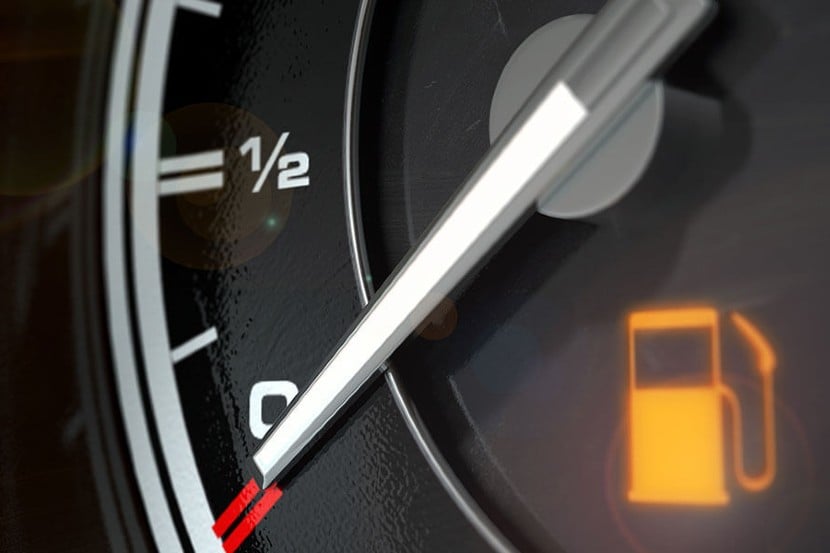When the fuel warning light pops up, it’s natural to wonder how far can I actually go? While it varies depending on the car, there are ways to avoid running out of fuel.

How many miles can I drive with the fuel light on?
How many miles you'll be able to drive when the fuel light comes on depends on your car's make and model, as well as your driving style and road conditions. But it's not worth taking any chances, fill your tank up before you're in the red.
Data suggests cars can travel between 30 to 45 miles after the fuel warning light appears. For example, according to the RAC, a Ford Fiesta can typically travel around 37 miles after the fuel light comes on. While a Volkswagen Golf can manage approximately 44 miles. Keep in mind, these figures can vary based on driving conditions and maintenance.
You can check your owner's manual for more precise details or look at your dashboard, as many cars now provide an estimated range left. As a rough guide, here are some of the UK’s top cars and how far each might go once the fuel light has come on:
| Car model* | Remaining mileage** |
|---|---|
|
Audi Q5
|
64 miles
|
|
VW Golf
|
61 miles
|
|
Vauxhall Astra
|
55 miles
|
|
Ford Focus
|
52 miles
|
|
Audi A1
|
48 miles
|
|
Audi A5
|
47 miles
|
|
Land Rover Range Rover
|
47 miles
|
|
VW Polo
|
41 miles
|
|
Ford Fiesta
|
41 miles
|
|
Audi RS3
|
32 miles
|
*Most popular models taken from a 2025 YouGov survey
**Remaining mileage calculated using 10% of the fuel capacity and real MPG data from HonestJohn and fuel tank capacity from Cars-Data.com. This is an estimate. The remaining mileage to empty will depend on how you drive, the driving conditions, your car's age and a variety of other factors.
Will my car run out of fuel at 0 miles?
Not necessarily. Some cars may have a small buffer after hitting "0 miles" on the dashboard. This might give you an extra 10-15 miles, but it's not guaranteed. Treat "0 miles" as a final warning, not a challenge.
Should I keep driving if my tank says 0 miles left?
No. Running out of fuel is not an ideal situation. It can damage your car's fuel pump and injectors, potentially leading to costly repairs. Additionally, getting stranded on the roadside also isn't ideal for anyone.
Relying on this buffer could be a high-risk strategy and result in an expensive breakdown call out. It’s much more sensible to fill your tank as soon as the fuel light comes on.
If you're looking for a place to fill up, you can use our app to find a petrol station near you. If you have enough fuel in the tank, you might even be able to venture to the cheapest one.
Find cheaper fuel prices with our app
Fuel has reached a record high but our app can help! It can also help you manage your car dates, running costs and insurance.
How to conserve fuel when the light is on or at 0 miles
If you find yourself in a sticky situation, here are some ways to conserve fuel:
-
Slow down: Lower speeds mean better fuel efficiency. Stick to 50 mph or less where possible.
-
Avoid idling: Turn off your engine if you're stationary for a while.
-
Lighten the load: Remove unnecessary items from your car to reduce weight.
-
Turn off the AC: Air conditioning uses extra fuel, so roll down your windows if it's not too windy.
-
Plan your route: Head straight to the nearest petrol station, avoiding traffic-heavy routes.
However, it's not advisable to drive anywhere other than to get fuel when the light is on.
Staying safe and following the highway code
Running out of fuel can land you and others in dangerous situations. In some cases, it can be illegal.
In places like Germany, running out of fuel on a motorway is seen as a preventable breakdown, which could result in a fine.
In the UK, running out of fuel isn’t illegal, but if it causes an obstruction, you could face fines or penalty points. Rule 97 of the Highway Code reminds drivers to check their fuel before setting off, especially for motorway journeys!
Suddenly losing power on a busy road or motorway can be dangerous to you and others. especially if you’re unable to pull over safely. If this does happen, some roadside assistance services will charge an additional fee if they have to come out just to provide emergency fuel.
What to do if you run out of fuel:
-
Stay calm and get to safety: If possible, pull over onto the hard shoulder or somewhere safe.
-
Turn on hazard lights: Let other drivers know you’re stuck.
-
Call for assistance: Whether it’s your breakdown cover provider or someone who can bring you some fuel to help get you on your way.
-
Don’t walk on motorways: It’s not safe to walk to a petrol station on high-speed roads – always wait for help in a safe location.
At the end of the day, your fuel warning light isn’t just a suggestion it’s a reminder to act fast. Running on empty is a risk not worth taking. Keeping at least a quarter of a tank can help prevent accidents. potential fines, and costly repairs. So, next time that light pops on, don’t push your luck, fill up as soon as possible.

